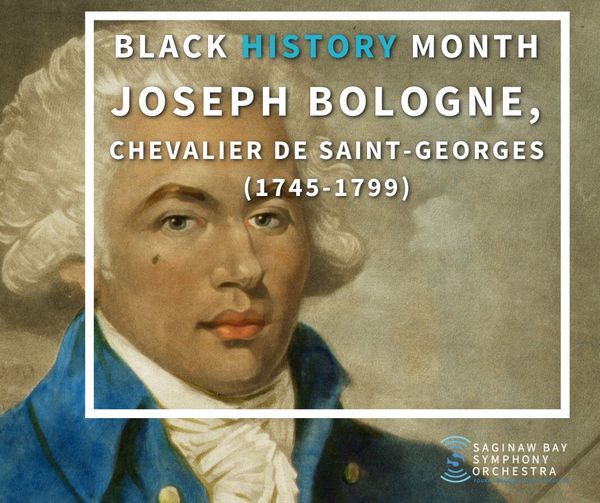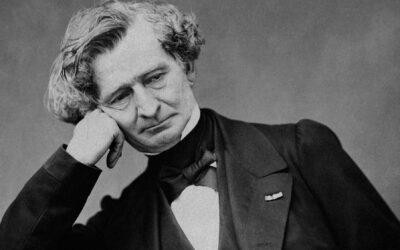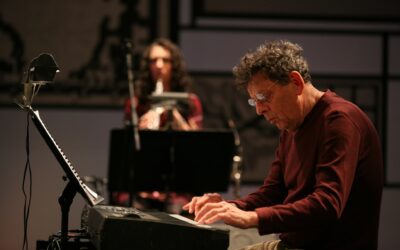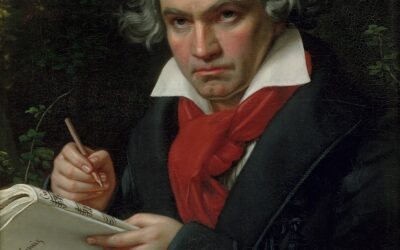The world’s first Black conductor, colonel of the world’s first Black military corps, and the finest swordsman in all of Europe –
Joseph Bologne, Chevalier de Saint-Georges was a French classical composer, virtuoso violinist, conductor of Le Concert des Amateurs and conductor/director of the highly prestigious Concert Spirituel, which became described as “the best orchestra for symphonies in Paris, and perhaps all of Europe”. Outside of classical music, Bologne was a world renowned champion fencer, and a colonel of the Legion St.-Georges, the first all-Black regiment in Europe. Saint-Georges and Amadeus Mozart lived in the same home together, and there are many rumors that Mozart was jealous of Saint-Georges musical ability. Today, Joseph Bologne, Chevalier de Saint-Georges is remembered as being the first Black classical composer, and in his time, the finest swordsman in all of Europe.
Born in 1745 to Georges de Bologne Saint-Georges, the son of a white plantation owner and councilor at the parliament of Metz, and Anne, dite Nanon, his wife’s 16 year old African slave of Senegalese origin, Bologne was officially acknowledged by his father and given his father’s surname. Though the laws at the time under King Louix XV made it illegal for Bologne’s father to marry his mother, Bologne’s father made sure Bologne was well educated, first at a boarding school and then enrolled in Tessier de La Boessiere’s Academie royale polytechnique des armes et de l’equitation (Academy of fencing and horsemanship), where at the age of 15, his progress was unmatched and he was already beating the best swordsmen, becoming one of the worlds best swordsmen at the age of 17. Upon graduation, legally unable to inherit his father’s title, Bologna was made a Gendarme du Roi (officer of the king’s bodyguard) and a chevalier, earning him the title “Chevalier de Saint-Georges”.
Learning violin from a young age, the master fencer surprised and amazed the Parisian public when he made his debut as a concert violinist in Gossec’s new orchestra. Le Concert des Amateurs. Four years later, he was the orchestra’s concertmaster and conductor. In 1772, Saint-Georges debuted as a violin soloist, amazing Parisian crowds with his first two violin concertos. Saint-Georges’s concertos were a public sensation, “enrapturing especially the feminine members of his audience,” according to one source.
In July of 1778, after the death of Mozart’s mother in Paris, Mozart and Saint-Georges lived together under the same roof at the mansion of Madame de Montesson for approximately five months. 10 years the senior of Mozart, it has been rumored that Saint-Georges’s ability on the violin and with music composition drove Mozart into fits of jealousy, possibly culminating in Mozart’s dubiously biased portrayal of Monostatos in his opera “The Magic Flute”.
Between the years of 1770 and 1792, to the best of our knowledge, Saint-Georges wrote two symphonies, six operas, seven violin concertos, four symphonies oncertantes, five sonatas, three string quartet pieces, and at least ten pieces of vocal music. Other works have since been discovered, with claims of varying degrees of authenticity. While penning his works, Saint-Georges conducted numerous orchestras, including Le Concert des Amateurs and Concert Spirituel, as well as Concert de la Loge Olympique. He also maintained his career as a decorated swordsman, competing in matches across France.
The last decade of Saint-Georges life was dominated almost entirely by The French Revolution. Being of mixed race, Saint-Georges had greater rights than a slave of the time, but was denied many rights that were given to his white peers, including the right to marry. On August 26th, 1789, The Revolution proclaimed the equality of all men, regardless of race, and Saint-Georges embraced the cause, offering his service to the revolutionary army. When the Assembly ordered the levy of 91,000 volunteers into the ranks of the National Guard, Saint-Georges was one of the first to sign up where he lived in Lille. In September 1792, the Assembly decreed the formation of a corps of light troops consisting of 1,000 Black soldiers, 800 of which were on foot, and 200 mounted. Originally called “Legion franche de cavalerie des Americains et du Midi”, the legion was soon commonly referred to as “Legion St-Georges”, after their famous colonel. During the period of the French Revolution now known as The Reign of Terror, The French Revolution grew increasingly paranoid and began to take harsh measures against those suspected of being enemies of the revolution, and turned on their own forces, including Saint-George’s Legion. In the early 1790’s, Legion St-Georges was disbanded, and Saint-Georges was dismissed and imprisoned for 18 months, cited for “non-revolutionary activities”, such as music events.
After being dismissed from the military, there are accounts that Saint-Georges sailed to Saint-Domingue, and took part in the Haitian Revolution to abolish slavery in Haiti. Within two weeks of his return to France, Saint Georges became active with the local Masonic lodge, becoming France’s first Black freemason, and forming the masonic symphony orchestra Le Cercle de l’Harmonie while rising to the rank of 33rd degree freemason. In 1799, tormented by news of the Black vs mulatto race war emerging in Haiti (known now as the War of Knives) from the wake of the Haitian Revolution, Saint-Georges contracted a bladder disease, which he kept secret and did not seek medical attention for. Joseph Bologne, Chevalier de Saint-Georges passed away on June 12, 1799 from gangrene. His death certificate has since been lost in a fire, and he had no known descendants.
![SBSO Full Logo (color) fullwhite[Converted]](https://www.saginawbayorchestra.com/wp-content/uploads/2022/01/SBSO-Full-Logo-color-fullwhiteConverted.png)










